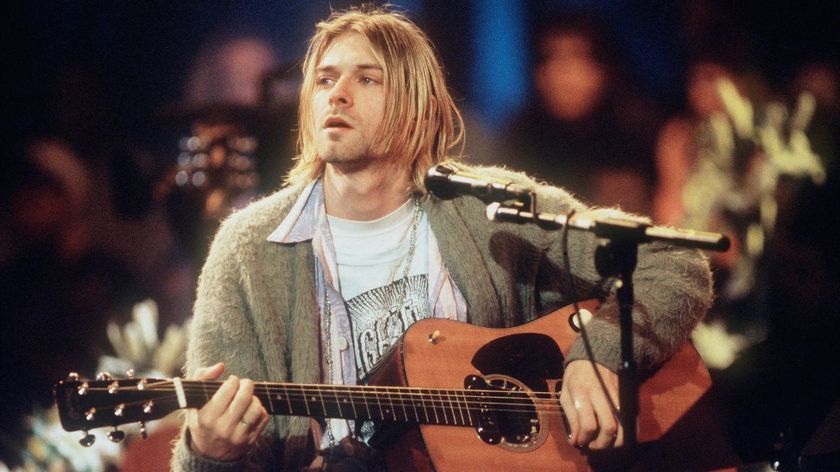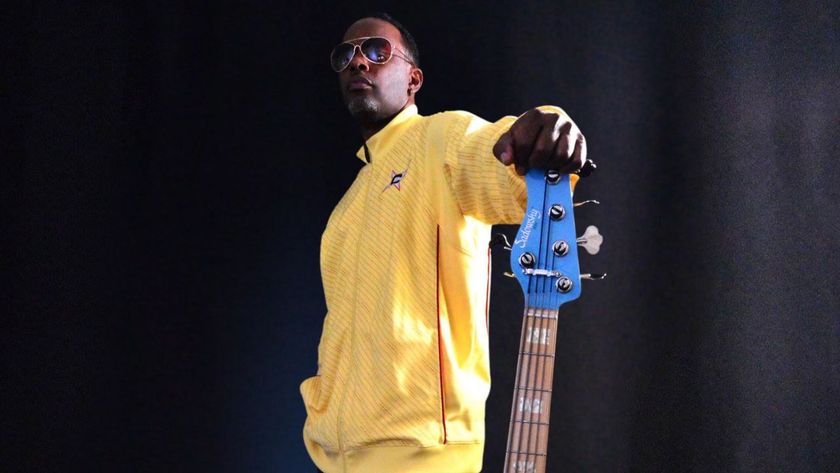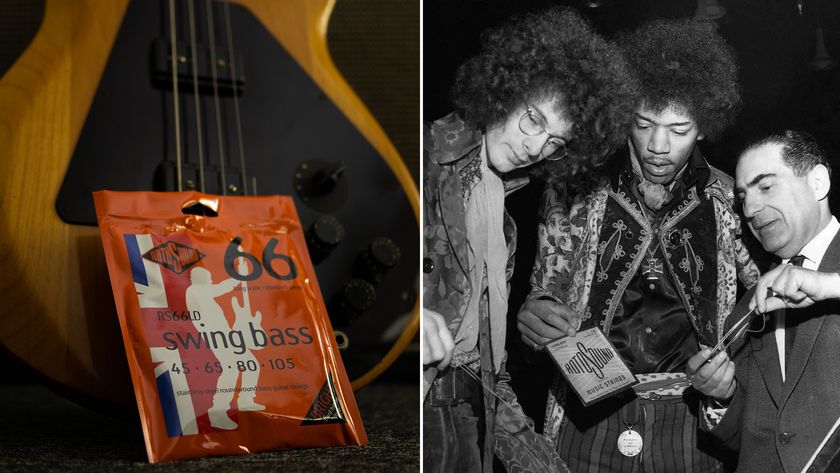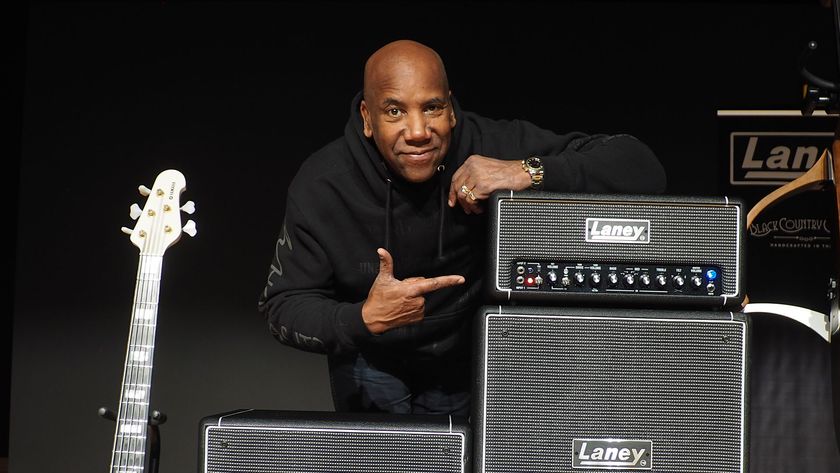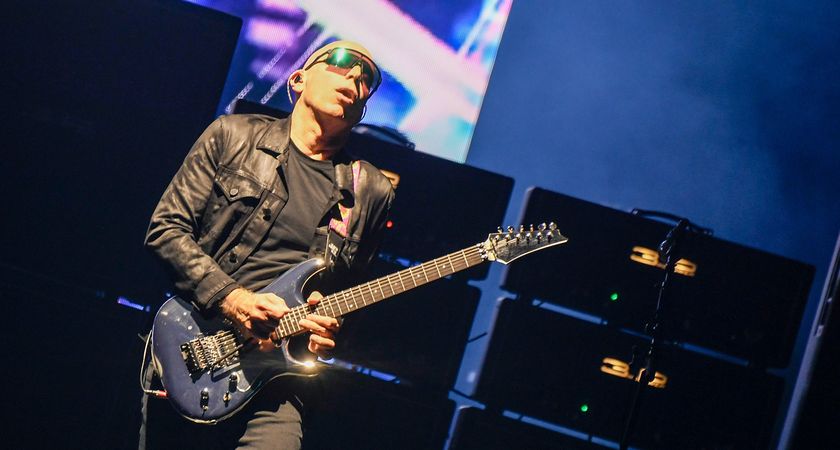10 Top Players Share Their Guitar Backstories — From the Archives
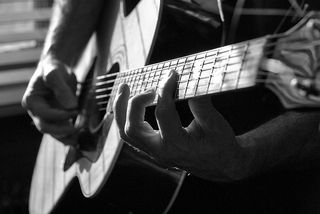
We all have to start somewhere.
From that first secondhand guitar to superstar…it doesn’t happen overnight.
Here some great players share the stories of their humble beginnings and their musical influences.
Jimmy Page
“Somebody laid a very old Spanish guitar on [me]. I probably couldn’t play it now if I tried. It was sitting around our living room for weeks and weeks. I wasn’t interested.
“Then I heard a couple of records that really turned me on, the main one being Elvis Presley’s “Baby, Let’s Play House,” and I wanted to play it. I wanted to know what it was all about.
“This other guy at school showed me a few chords and I just went on from there. When I was at school I had my guitar confiscated every day. They would hand it back to me each afternoon at four o’clock. But I always thought the good thing about guitar was that they didn’t each it in school. Teaching myself to paly was the first and most important part of my education.”
Get The Pick Newsletter
All the latest guitar news, interviews, lessons, reviews, deals and more, direct to your inbox!
Slash
“The first guitar I ever got was a Spanish style model that had only one string on it.
“My grandmother dug it up because she knew I’d always been interested in playing. So I learned everything you could learn on just a one-strong guitar.
“I finally acquired a real six-string acoustic when I was 15, an old Epiphone that I carried around forever.”
James Taylor
“Since I didn’t take lessons my guitar style sort of developed in a vacuum.
“I just listened to things and tried to recreate them.
“Early on I would put changes together, find the appropriate bass note and then just look for the ascending harmony in the chord.
“What I really do in general is play two or three separate lines at the same time against each other. It’s more of a horizontal, rather than a vertical way of thinking.”
Sheryl Crow
“At first I only wanted to learn songs that I already knew and liked.
“I started with some Dylan, [who flatpicked] in the style of the Carter Family and Jimmie Rodgers. I wasn’t really aware of the stylistic differences between one song and another, because I didn’t approach it with that mindset; I was just figuring out the chords.
“Later I got much more into playing the melody on the guitar while singing. It just felt right. And Dylan was definitely the biggest influence there.”
Pete Townshend
“For a long time I couldn’t afford strings, so after I’d broken a couple I used to take the strings that were left and group them together in the middle of the guitar and work at making chord shapes with them, inventing simple fingerings.
“I think I was actually working in a kind of early bluegrass harmonic style, playing as many as two or three strings open with a dulcimer-like technique but then trying to make it sound like rock and roll.
Jack Johnson
“I started playing when I was 14. One of my dad’s friends would come over from California and play Jimmy Buffett or Van Morrison or Bob Dylan songs and everybody would sing along at the barbeque, sitting out on the front porch.
“Then when he would leave, I wouldn’t know how to play the chords, and the barbeque got a little boring. So he started showing me how to play the chords.”
Kaki King
“I started playing when I was four years old on a little bitty Pepe—that was the brand name—four-string acoustic.
“I took lessons for about a year and a half from a woman named Maxine, but didn’t listen to enough music to really love the guitar, so I quit.
“Lucky for me, though, my dad kept this Chiquita short-scale six-string electric guitar around the house, and when I started playing that I saw the light.”
John Mayer
“I was never interested in acoustic guitar until after I was at the Berklee School of Music in Boston for a few months.
“Sitting around playing electric guitar alone, I felt like something was clearly missing. I began to understand that the acoustic was a self-sufficient instrument in a way that the electric just isn’t.
“I got an acoustic and started writing songs right away, which I’d never really done before, and it occurred to me that you could actually make a living on your own with one of these things.”
Dave Matthews
“I began to play very percussively on the guitar because I fantasized about having a drum kit behind me…I wanted something that would give my tunes a backbeat, or a sense of groove.
“I had to find a way to cover the rhythm and wave some melody into the accompaniment as well…after trying that I discovered I could play more melodic progressions that were inside a chord.
“I got the inspiration for the constant right-hand up-and-down motion [I use] from Stevie Ray Vaughan.
Jack Black
“When I first picked up the guitar, Kyle [Gass, Blacks’s Bandmate in Tenacious D] was teaching me how to play.
“And I think I strummed the D, G and A chords about a hundred thousand times in a row, just those three chords. I haven’t practiced that much since then; I should be better by now.
“But the stuff that I liked learning to play early on was Neil Young. He’s got great songs based on real basic chords; when you hear the song, you say ‘Oh, listen to that beautiful chord progression!’ And it’s like, G, F, D…
“It’s like Bob Dylan used to say —‘two chords and the truth.’ Actually, I think you need three. If he would have changed it to ‘three chords and the truth,’ then he really would’ve had something!”
This article was part of the feature “School of Acoustic Rock” originally printed in Guitar World Acoustic, Issue No. 74, 2004.
Laura B. Whitmore is a music industry marketing veteran, music journalist and editor, writing for Parade.com, Guitar World, and others. She has interviewed hundreds of musicians and hosts the She Rocks Podcast. As the founder of the Women’s International Music Network, she advocates for women in the music industry and produces the annual She Rocks Awards. She is the Senior Vice President of Marketing for Positive Grid, making the world safe for guitar exploration everywhere! A guitarist and singer/songwriter, Laura is currently co-writing an album of pop songs that empower and energize girls.
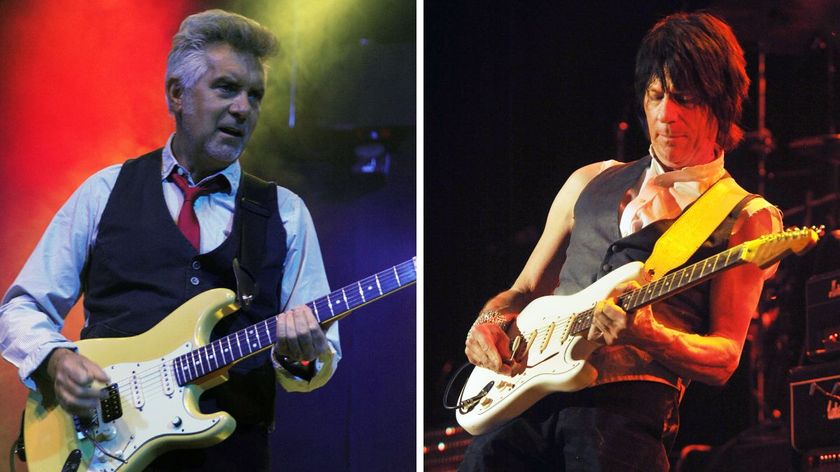
“Jeff was playing through his dodgy Marshall and didn’t like the sound. He said, ‘We’ll do it again, later on…’” Mick Rogers may be in possession of Jeff Beck’s last-ever studio recording

“I could try and recreate his vibrato for the rest of my life. It’s never going to happen. If I got to play his guitar through his rig, it’s not gonna sound like him”: Tony Iommi changed his life – now Scott Ian is playing Sabbath’s last stand

